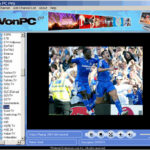In public speaking, or speaking of any form to a diverse group of individuals, there is an importance necessary in remembering to focus on the audience. In beginning to tailor an effective presentation, the considerations of the audience that are vital to achieving a success include the various characteristics of the target audience and the communication channels that will be sufficient and appropriate to convey the message to the audience effectively. Using a presentation of quarterly sales information at an in-person meeting to a group of stakeholders as the foundation for analyzing the audience, it will be necessary to explore the various characteristics’ of this diverse group of individuals who include managers, sales persons, and customers. To best illustrate the necessary considerations that are important in performing this presentation effectively, a breakdown of the audience characteristics and their demographic make-up bear analysis.
Audience Characteristics
When preparing a presentation concerning sales data to a diverse group of managers, sales persons, and customers; attention to the differences and similarities of the group need to be considered. The amount of technical information and understanding among the differing groups varies and this requires the ability to formulate a presentation that puts an emphasis on finding the way to communicate the information to each individual within the group that is easily understandable. This presentation also needs to maintain the ability to entertain the audience members and hold the attention of each of them. To understand this requirement best, an analysis of the breakdown of the various groups within the audience and their unique needs bear examination.
Nonprofessional
When presenting the data, be mindful of the likelihood that customers within the audience are limited in their familiarity with the topic (Wisc-Online, 2009). It would be beneficial to use illustrations to highlight the main ideas of the presentation. Use of analogies can be beneficial and technical terminology within the presentation is best if usage is limited and usage of technical terminologies needs to explanation if presented within the presentation (Wisc-Online, 2009). Lay persons will also have a better understanding of the data if presented in a narrative manner rather than a strictly technical presentation of the data (Wisc-Online, 2009). As the least informed individuals within the group the presenter will need to take care to ensure their understanding of the data because it can be argued that the customers is an organizations greatest asset. Other social groups within the audience also have requirements of their own that are of equal importance.
Executives
As the higher-level managers within the company and top-level decision-makers, executives are much the same as the nonprofessional in their understanding of the technical aspects of the information. These individuals will be most concerned with the practical implications of the data and what effect this will have on their need to make important decisions based on the information within the presentation (Wisc-Online, 2009). The data needs to convey this information clearly to the executive in a manner that illustrates cause and effect so that as the decision-makers for the organization these decisions can be made based off the presentation. The data must also maintain the technical information necessary for understanding by the experts within the group.
Experts
In giving a sales presentation, the individuals within the group that would be most knowledgeable of industry terminology are likely to be the sales persons and lower to mid-level managers. In preparing the presentation, incorporation of graphs and tables that communicates the data in a complete and accurate manner would be beneficial (Wisc-Online, 2009). The experts’ interest in the data will focus on the cause and effect of the information and the new ideas they derive from the presentation (Wisc-Online, 2009). Having the knowledge of the differences and similarities of the groups’ make-up is a suitable beginning on preparing an effective presentation. Another consideration is the demographic make-up of the members of each group and the individual requirements of each in understanding the data.
Demographics
Understanding the demographic make-up of the audience will help in formulating a presentation that allows for communication of the data in the most effective manner. Their age, gender, and education are the key demographics to consider (Pearson, 2009). Understanding each of these demographic markers will aid in making a presentation that conveys all the important aspects of the data in an informative and understandable manner.
Age
Considering the age of the audience will aid in formulating the best manner in presenting the data to the audience by pinpointing the most likely uses of newer technologies in addition to traditional presentation methods. Use of highly technical presentation mediums may alienate the older generation of stakeholders more familiar with traditional methods of presentation. Younger, tech-savvy members of the group may appreciate the use of graphical internet presentations while the older members of the group may be more at ease with presentations that use information passed among the group and presented in methods more familiar to their understanding.
Gender
Though gender is less important to the presentation that some may expect, a presenter needs to ensure that the presentation presents the data in a manner that is understood by members of each gender. Analogies used needs to be understandable by the mass majority of members of each gender group and consideration of these need be a part of putting a presentation in order.
Education
Considering the education of the individuals within the group carries similar implications as careful consideration of the groups to which they belong. Those with a higher degree of education will typically have a more thorough understanding of technical presentation; however, the likelihood of each member of the group having the necessary knowledge to understand industry technical talk is doubtful and should be considered as part of the presentation. Understanding all of these aspects of your audience allows the presenter to formulate the best presentation possible to reach each member of the audience.
Conclusion
With this understanding of the audience’s characteristics and demographic make-up, a presentation that would likely be best would be one of narration using non-technical terminology accompanied by graphical and tabular presentations of the data. The data should be presented using a combination of newer presentation technologies such as PowerPoint presentations on overhead projection monitors and distribution of paper copies of the data to each group member. This would allow the members of each group to follow along with the presentation in am manner most familiar with their own communication method and would be an effective presentation that considers their demographic differences.
References
Pearson Education, Inc. (2009). Demographic Characteristics of Your Audience. The Allyn
and Bacon Public Speaking Website. Retrieved on June 30, 2009 from
http://wps.ablongman.com/ab_public_speaking_2/24/6223/1593249.cw/index.html
Wisc-Online. (2009). Audience Characteristics Chart. Wisconsin Online Resource center.
Retrieved on June 30, 2009 fromhttp://www.wisc-online.com/objects/TRG1800/index.html



